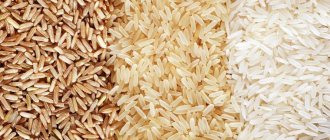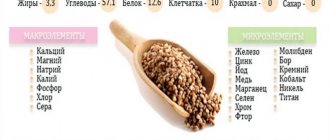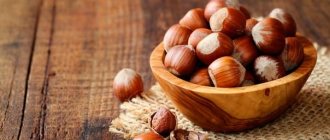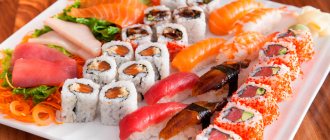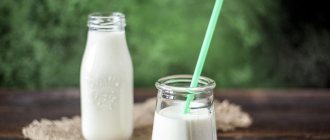But you may be wondering how many calories are in that chicken on your plate.
People eat various parts of chicken, including chicken breast, thighs, wings, and drumsticks. Each part contains a different number of calories and different proportions of protein and fat.
Here are the calories for the most popular parts of chicken.
How many calories are in chicken breast, thighs, wings and drumsticks?
Chicken breast: 284 calories
Chicken breast is one of the most popular parts of chicken. It is rich in protein and low in fat, making it an excellent choice for people trying to lose weight.
One cooked skinless, boneless chicken breast (172 grams) contains the following nutrients ():
- Calories: 284 kcal.
- Protein: 53.4 g.
- Carbohydrates: 0 g.
- Fat: 6.2 g.
A 100 gram serving of chicken breast contains 165 calories, 31 grams of protein and 3.6 grams of fat ().
This means that approximately 80% of the calories in a chicken breast come from protein and 20% from fat.
Keep in mind that these amounts are for chicken breast without any added ingredients. Once you start cooking it in oil or adding marinades or sauces, you will increase the total number of calories, carbohydrates and fat.
Summary:
Chicken breast is a low-fat, high-protein part of the chicken. One chicken breast contains 284 calories, or 165 calories for every 100 grams. About 80% of calories come from protein and 20% from fat.
Related Products
Chicken Breast (184 cal) Steamed Chicken (175 cal) Cooked Chicken (237 cal) Chicken Breast (150 cal) Boiled Chicken (215 cal) Chicken Leg (233 cal) Chicken Wings (241 cal) White chicken (188 cal) Chicken fillet (150 cal) Skinless chicken (150 cal) Chicken cutlet (290 cal) Chicken steak (239 cal) Grilled chicken (193 cal) Fried chicken (284 kcal) Rotisserie chicken (150 cal) Chicken thigh (226 cal) Whole fried chicken (227 cal) Baked chicken (150 cal) Lean chicken (143 cal) Skin-on chicken (234 cal) Sauté chicken (217 cal) Chicken skin (423 cal) Canned chicken (155 cal) Chicken gizzard (154 cal) Minced chicken (189 cal) Chicken heart (185 cal) Chicken liver (170 cal) Stewed chicken (210 cal) Raw Chicken (172 cal) Chicken Giblets (191 cal) Chicken Leg (188 cal) Whole Chicken (239 cal)
Chicken thigh: 109 calories
Chicken thigh is slightly more tender and flavorful than chicken breast due to its higher fat content.
One cooked skinless, boneless chicken thigh (52 grams) contains ():
- Calories: 109 kcal.
- Protein: 13.5 g.
- Carbohydrates: 0 g.
- Fat: 5.7 g.
A 100 gram serving of chicken thigh contains 209 calories, 26 grams of protein and 10.9 grams of fat ().
Thus, 53% of calories come from protein and 47% from fat.
Chicken thighs are often less expensive than chicken breasts, making them a good choice for anyone.
Summary:
One chicken thigh contains 109 calories, or 209 calories for every 100 grams. Calories come 53% from protein and 47% from fat.
Conclusion
In search of ways to eat healthy, people often forget about what is familiar and available at all times. You need to use the knowledge and recommendations of nutritionists, choose chicken or chicken meat, and cook taking into account the preferences of your household.
There are a huge number of recipes with chicken in dishes. Listen to your body and find your solution to your dietary problem.
Calories, kcal:
Proteins, g:
Carbohydrates, g:
Chicken meat is the basis of the diet of many families; it is understandable, affordable and healthy. Boiled chicken is considered one of the healthiest (along with steamed) because no fats or oils are added during cooking. Boiled chicken has a pink-gray color, the breast is lighter than the rest of the carcass. It is best to cook the chicken without skin and fat, whole, so that the meat remains juicy.
Calorie content of boiled skinless chicken
The calorie content of boiled skinless chicken is 170 kcal per 100 grams of product; if the skin is not removed, the calorie content increases to 214 kcal.
Composition and beneficial properties of boiled skinless chicken
Boiled chicken contains a lot of easily digestible protein, so athletes, especially those who value muscle mass, often eat boiled chicken not only when drying the body, but also on ordinary days. Boiled chicken contains vitamins, minerals necessary for the body: , and essential fatty amino acids. Boiled chicken (without skin) is a dietary product, useful not only during weight loss, but also for raising vitality, combating nervous disorders, insomnia, general weakness and depressive conditions. Boiled chicken has a beneficial effect on the condition of nails, hair and bone tissue, and helps improve hematopoietic processes. By eating boiled chicken with fresh vegetables, you can rest assured that your digestive tract will work regularly and without failures.
Harm of boiled chicken without skin
Chicken, even cooked without skin, can cause allergic reactions, so you need to introduce it into the children’s diet in small portions so as not to provoke complications. Excessive consumption of boiled chicken can cause an increase in cholesterol levels in the blood; if the chicken is not rustic, then it may contain antibiotics and hormones that are completely unnecessary for the body (calorizator). To reduce the risk of harmful substances entering, it is necessary to drain the first broth a few minutes after boiling.
Of course, it is used in basic nutrition systems and diets, but by consuming all parts of boiled chicken and fresh vegetables, you can avoid gaining extra pounds. High protein content and the absence of carbohydrates make boiled chicken a leader among meat ingredients for proper nutrition and weight loss.
How to choose and cook chicken correctly
If you have the opportunity to purchase chicken raised at home, you should not be afraid of its slight blue color, there is nothing wrong with that. Broilers, which fill store shelves, are much more attractive in appearance than their rustic counterparts, but are less useful. When choosing a chicken in a store, you should pay attention to the integrity of its skin; small holes indicate that the chicken was plucked, and larger holes, sometimes long cuts, indicate that the carcass was “pumped” with drugs for a better appearance and weight gain.
Before cooking, you need to thoroughly rinse the chicken and remove skin and fat with a sharp knife, especially if it is yellow. without cutting, pour in cold water and put on fire, five minutes after boiling, drain the water, rinse the chicken and the pan from foam, pour clean cold water over the carcass, add vegetables (,) as desired, bring to a boil, reduce heat to medium and simmer , removing the resulting foam, until the chicken meat is soft. You need to salt the chicken 10-15 minutes before it is ready; after turning off the heat, leave the chicken meat in the broth to cool. The chicken can then be removed and boned.
Boiled chicken (without skin) in cooking
Boiled chicken is a versatile product, suitable for use as a separate dish, both hot and cold, and also as an ingredient for salads, sandwiches, cold appetizers, soups, pizza toppings, pies and pancakes. Boiled chicken is traditionally combined with fresh vegetables, mushrooms, bright sauces and rice.
For more information about the benefits and harms of boiled skinless chicken, watch the video “Product of the day. Chicken" TV show "About the Most Important Thing".
Especially for Copying this article in whole or in part is prohibited.
Chicken wings: 43 calories
When you think of a healthy part of chicken, chicken wings probably don't come to mind.
However, as long as they are not coated in breading or sauce or grilled, they can easily fit into a healthy diet.
One cooked skinless, boneless chicken wing (21 grams) contains ():
- Calories: 42.6 kcal.
- Protein: 6.4 g.
- Carbohydrates: 0 g.
- Fat: 1.7 g.
A 100 gram serving of chicken wings contains 203 calories, 30.5 grams of protein and 8.1 grams of fat ().
This means that 64% of calories come from protein and 36% from fat.
Summary:
One chicken wing contains 43 calories, and a 100 gram serving of wings contains 203 calories. Calories come 64% from protein and 36% from fat.
Chicken necks recipe. Calorie, chemical composition and nutritional value.
| Nutrient | Quantity | Norm** | % of the norm in 100 g | % of the norm in 100 kcal | 100% normal |
| Calorie content | 139.4 kcal | 1684 kcal | 8.3% | 6% | 1208 g |
| Squirrels | 11.3 g | 76 g | 14.9% | 10.7% | 673 g |
| Fats | 8.9 g | 56 g | 15.9% | 11.4% | 629 g |
| Carbohydrates | 2.6 g | 219 g | 1.2% | 0.9% | 8423 g |
| Organic acids | 0.1 g | ~ | |||
| Alimentary fiber | 0.8 g | 20 g | 4% | 2.9% | 2500 g |
| Water | 189 g | 2273 g | 8.3% | 6% | 1203 g |
| Ash | 0.773 g | ~ | |||
| Vitamins | |||||
| Vitamin A, RE | 180 mcg | 900 mcg | 20% | 14.3% | 500 g |
| Retinol | 0.027 mg | ~ | |||
| beta carotene | 0.917 mg | 5 mg | 18.3% | 13.1% | 545 g |
| Vitamin B1, thiamine | 0.05 mg | 1.5 mg | 3.3% | 2.4% | 3000 g |
| Vitamin B2, riboflavin | 0.151 mg | 1.8 mg | 8.4% | 6% | 1192 g |
| Vitamin B5, pantothenic | 0.712 mg | 5 mg | 14.2% | 10.2% | 702 g |
| Vitamin B6, pyridoxine | 0.214 mg | 2 mg | 10.7% | 7.7% | 935 g |
| Vitamin B9, folates | 7.508 mcg | 400 mcg | 1.9% | 1.4% | 5328 g |
| Vitamin B12, cobalamin | 0.197 mcg | 3 mcg | 6.6% | 4.7% | 1523 g |
| Vitamin C, ascorbic acid | 2.8 mg | 90 mg | 3.1% | 2.2% | 3214 g |
| Vitamin E, alpha tocopherol, TE | 1.617 mg | 15 mg | 10.8% | 7.7% | 928 g |
| Vitamin H, biotin | 0.236 mcg | 50 mcg | 0.5% | 0.4% | 21186 g |
| Vitamin K, phylloquinone | 1 mcg | 120 mcg | 0.8% | 0.6% | 12000 g |
| Vitamin RR, NE | 2.7613 mg | 20 mg | 13.8% | 9.9% | 724 g |
| Niacin | 0.132 mg | ~ | |||
| Macronutrients | |||||
| Potassium, K | 181.46 mg | 2500 mg | 7.3% | 5.2% | 1378 g |
| Calcium, Ca | 26.7 mg | 1000 mg | 2.7% | 1.9% | 3745 g |
| Magnesium, Mg | 17.93 mg | 400 mg | 4.5% | 3.2% | 2231 g |
| Sodium, Na | 52.77 mg | 1300 mg | 4.1% | 2.9% | 2464 g |
| Sera, S | 14.05 mg | 1000 mg | 1.4% | 1% | 7117 g |
| Phosphorus, Ph | 88.4 mg | 800 mg | 11.1% | 8% | 905 g |
| Chlorine, Cl | 5.59 mg | 2300 mg | 0.2% | 0.1% | 41145 g |
| Microelements | |||||
| Aluminium, Al | 109 mcg | ~ | |||
| Bor, B | 42.7 mcg | ~ | |||
| Iron, Fe | 1.557 mg | 18 mg | 8.7% | 6.2% | 1156 g |
| Yod, I | 0.64 mcg | 150 mcg | 0.4% | 0.3% | 23438 g |
| Cobalt, Co | 1.067 mcg | 10 mcg | 10.7% | 7.7% | 937 g |
| Lithium, Li | 0.44 mcg | ~ | |||
| Manganese, Mn | 0.0709 mg | 2 mg | 3.5% | 2.5% | 2821 g |
| Copper, Cu | 86.45 mcg | 1000 mcg | 8.6% | 6.2% | 1157 g |
| Nickel, Ni | 0.64 mcg | ~ | |||
| Rubidium, Rb | 101.5 mcg | ~ | |||
| Selenium, Se | 8.323 mcg | 55 mcg | 15.1% | 10.8% | 661 g |
| Fluorine, F | 24.88 mcg | 4000 mcg | 0.6% | 0.4% | 16077 g |
| Chromium, Cr | 0.43 mcg | 50 mcg | 0.9% | 0.6% | 11628 g |
| Zinc, Zn | 1.8322 mg | 12 mg | 15.3% | 11% | 655 g |
| Digestible carbohydrates | |||||
| Starch and dextrins | 0.055 g | ~ | |||
| Mono- and disaccharides (sugars) | 2.6 g | max 100 g | |||
| Glucose (dextrose) | 0.461 g | ~ | |||
| Sucrose | 1.643 g | ~ | |||
| Fructose | 0.329 g | ~ | |||
| Essential amino acids | 0.084 g | ~ | |||
| Arginine* | 0.689 g | ~ | |||
| Valin | 0.544 g | ~ | |||
| Histidine* | 0.34 g | ~ | |||
| Isoleucine | 0.582 g | ~ | |||
| Leucine | 0.825 g | ~ | |||
| Lysine | 0.934 g | ~ | |||
| Methionine | 0.302 g | ~ | |||
| Methionine + Cysteine | 0.006 g | ~ | |||
| Threonine | 0.467 g | ~ | |||
| Tryptophan | 0.131 g | ~ | |||
| Phenylalanine | 0.44 g | ~ | |||
| Phenylalanine+Tyrosine | 0.019 g | ~ | |||
| Nonessential amino acids | 0.185 g | ~ | |||
| Alanin | 0.605 g | ~ | |||
| Aspartic acid | 0.988 g | ~ | |||
| Glycine | 0.542 g | ~ | |||
| Glutamic acid | 1.682 g | ~ | |||
| Proline | 0.453 g | ~ | |||
| Serin | 0.38 g | ~ | |||
| Tyrosine | 0.372 g | ~ | |||
| Cysteine | 0.142 g | ~ | |||
| Sterols (sterols) | |||||
| Cholesterol | 51.13 mg | max 300 mg | |||
| beta sitosterol | 6.933 mg | ~ | |||
| Saturated fatty acids | |||||
| Saturated fatty acids | 1.8 g | max 18.7 g | |||
| 12:0 Lauric | 0.025 g | ~ | |||
| 14:0 Miristinovaya | 0.031 g | ~ | |||
| 16:0 Palmitinaya | 1.139 g | ~ | |||
| 18:0 Stearic | 0.506 g | ~ | |||
| 20:0 Arakhinovaya | 0.01 g | ~ | |||
| 22:0 Begenovaya | 0.024 g | ~ | |||
| Monounsaturated fatty acids | 2.507 g | min 16.8 g | 14.9% | 10.7% | |
| 16:1 Palmitoleic | 0.246 g | ~ | |||
| 18:1 Oleic (omega-9) | 2.22 g | ~ | |||
| 20:1 Gadoleic (omega-9) | 0.012 g | ~ | |||
| Polyunsaturated fatty acids | 3.416 g | from 11.2 to 20.6 g | 30.5% | 21.9% | |
| 18:2 Linolevaya | 3.102 g | ~ | |||
| 18:3 Linolenic | 0.043 g | ~ | |||
| 20:4 Arachidonic | 0.129 g | ~ | |||
| 20:5 Eicosapentaenoic acid (EPA), Omega-3 | 0.012 g | ~ | |||
| Omega-3 fatty acids | 0.1 g | from 0.9 to 3.7 g | 11.1% | 8% | |
| 22:5 Docosapentaenoic acid (DPA), Omega-3 | 0.025 g | ~ | |||
| 22:6 Docosahexaenoic acid (DHA), Omega-3 | 0.049 g | ~ | |||
| Omega-6 fatty acids | 1.2 g | from 4.7 to 16.8 g | 25.5% | 18.3% |
Chicken drumsticks: 76 calories
Chicken legs consist of two parts - thigh and drumstick. Chicken drumstick is the lower part of the leg.
One cooked skinless, boneless chicken drumstick (44 grams) contains ():
- Calories: 76 kcal.
- Protein: 12.4 g.
- Carbohydrates: 0 g.
- Fat: 2.5 g.
A 100 gram serving of chicken drumsticks contains 172 calories, 28.3 grams of protein and 5.7 grams of fat ().
When it comes to counting calories, about 70% comes from protein and 30% from fat.
Summary:
One chicken drumstick contains 76 calories, and 100 grams contains 172 calories. 70% of calories come from protein and 30% from fat.
Other parts of chicken
While chicken breast, thighs, wings and drumsticks are the most popular parts of chicken, there are also several others to choose from.
Here are the calorie content of some other parts of chicken (, , , ):
- Chicken strips (small breast muscles of chicken) : 263 calories per 100 grams.
- Chicken backs : 137 calories for every 100 grams.
- Dark meat : 125 calories for every 100 grams.
- Light meat : 114 calories for every 100 grams.
Summary:
The amount of calories in different parts of chicken varies. Light meat has the lowest amount of calories, while chicken strips have the highest level.
Video of cooking stewed chicken
Chicken meat is the most commonly consumed meat by us. Of all types of meat, it is not only the most affordable, but also the most dietary, and therefore forms the basis of many diets. As you know, when boiled it has the least amount of calories, but not everyone knows how many calories there are in boiled chicken.
Useful properties of boiled chicken
Chicken meat, being tasty, nutritious and low in calories, in addition to being easily absorbed by the body, is also good for health. The amount of protein in it reaches 22%, while fat is present no more than 10%. The meat of this bird is rich in micro- and macroelements (copper, magnesium, potassium, iron, zinc, etc.), as well as vitamins E and A, which are so necessary for the body. However, this is not the only thing that makes chicken meat dietary and useful for a healthy diet. The fact of how many calories are in chicken in general is also important, but now we will look at its boiled version.
Calorie content of boiled chicken
The high taste and dietary properties of this poultry meat have been known since ancient times and are still used to this day to restore the body after serious illnesses, since this product is able to strengthen the immune system and restore strength. People who eat it while on a diet are primarily interested in the question of how many calories are in boiled chicken, because in this form it has the least amount of calories. Thus, the calorie content of boiled chicken fillet per 100 g of product is 135 kcal, and the fattest version, meat with skin, which can reach 195 kcal in calorie content.
How to boil chicken meat correctly?
Due to the fact that chicken fillet is minimal, it is used in all kinds of diets. At the same time, combining it with other products is not prohibited. In addition, other parts of the bird can be eaten. When using legs or chicken breast, after rinsing, place them in a pan of water and bring to a boil. It is recommended that after 5 minutes of cooking, drain the water, pour cold clean water over the meat, and only then continue cooking it. As a result of these actions, you will be able to get rid of hormones and antibiotics if they were used in raising poultry. After this, the meat should be salted and cooked until tender, then cut into small pieces. An excellent addition to boiled chicken, including in the diet menu, would be rice, washed and boiled in salted water.
The dietary benefits of chicken meat are constantly discussed. But are different parts of chicken equally healthy? It’s worth starting with the fact that it is advisable to cook, and therefore eat, chicken without the skin, as this is where cholesterol accumulates. Deposited on the walls of blood vessels, it can cause. The calorie content of the pulp without skin is 241 kcal per 100 g of product. Chicken fillet is considered the lowest in calories, its calorie content is 113 kilocalories per 100 g. The energy value of the liver and ventricle is approximately the same and is about 140 kcal per 100 g, and the heart - 158 kcal per 100 g. The situation is slightly worse with hams. Their calorie content is 180 kcal per 100 g of product. In addition, it is in them that antibiotics accumulate, which are used when raising chickens on poultry farms.
Boiled chicken
The calorie content of chicken meat depends on the method of heat treatment. The energy value of boiled chicken is the lowest - only 140 kilocalories per 100 g, which is quite low for meat. If you want to cook chicken broth, then cooks and nutritionists unanimously advise draining the first water. This way you will not only get rid of excess fat, but also significantly reduce the calorie content of the broth. Boiled fillet and thighs contain 95 kcal and 170 kcal per 100 g, respectively.
Stewed chicken
Braising is another method of cooking that keeps chicken low in calories. There are many different ways to stew chicken; the most common is chicken with vegetables. For this dish, take any part of the chicken and those that you love, so each housewife turns out this dish differently, and accordingly, the energy value is different. So how many calories are in stewed chicken? On average, stewed chicken contains about 130 to 170 kilocalories per 100 g, depending on the ingredients of the dish.
How many calories are in smoked chicken?
Smoked chicken is considered a more or less light product if eaten without the skin. The total calorie content of such chicken is 190 kcal per 100 g. Smoked breast - 120 kcal per 100 g; legs – 166 kcal per 100 g; wings – 206 kcal per 100 g.
Young chicken meat cooks faster and is softer. Poultry is suitable for broth and cooking, but for frying and smoking, choose store-bought poultry. This bird is prepared in different ways and is good in any form, just choose which method suits your taste.
Get rid of dangerous papillomas FOREVER
A simple and proven way to get rid of papillomas and warts without dangerous consequences. Find out how >>
Chicken meat is the most common and often used as food. Various dishes are prepared from it (both first and second), salads, soufflés, and used as a filling in pies and baked goods. In addition to the fact that the product is very tasty, it is also healthy, especially for those who want to lose weight.
Chicken skin adds calories
While a skinless chicken breast contains 284 calories with 80% protein and 20% fat, these numbers change dramatically when the skin is included ().
One cooked boneless, skin-on chicken breast (196 grams) contains ():
- Calories: 386 kcal.
- Protein: 58.4 g.
- Fat: 15.2 g.
In skin-on chicken breast, 50% of the calories come from protein and 50% from fat. Additionally, eating skin adds almost 100 calories ().
Likewise, one skin-on chicken wing (34 grams) contains 99 calories, compared to 42 calories for a skinless wing (21 grams). Thus, 60% of the calories in chicken wings with skin come from fat, compared to 36% in a wing without skin (,).
So if you're watching your weight or fat intake, eat skinless chicken to minimize calories and fat.
Summary:
Eating chicken with the skin adds a significant amount of calories and fat. Remove skin before consumption to reduce calories.
Application
Any part of a chicken carcass is suitable for frying. To make your dish as healthy as possible, remove the skin first. Believe me, the taste will not suffer at all. And you will get rid of extra calories. The breading also absorbs a lot. If you cook fried chicken without it, according to the “chicken tobacco” principle, you can make the dish exclusively dietary.
Market Analytics
- Black Lives Matter movement: reaction and consequences for the beauty industry
- COVID-19 is changing the rules of the game in the cosmetics market
- Beauty of the future: cosmetic innovations 2020
Convenient search for beauty salons on our website
Beauty salons in Moscow Beauty salons in St. Petersburg Beauty salons in Ekaterinburg Beauty salons in Novosibirsk
Latest blog posts on our website
- Naturecream / Apricot kernel oil for face
- Naturecream / MATRIXYL3000 - the best skin elasticity stimulator
- Naturecream / SPF in Natural Oils
- Naturecream / Geranium (Pelargonium) oil for skin health and beauty
- Prostye-sovety / Save on a beauty salon: procedures that can be done at home
- Naturecream / Growth Factor - brings back youth?
- Oksana-Lezina / 3 effective abdominal exercises from a fitness instructor for beginners
- Prostye-sovety / Making perfect curls at home
- Prostye-sovety / Which hair removal method to choose
- Naturecream / Wrinkles Puppets
Latest forum topics on our website
- Natalya / How to properly make a gelatin mask?
- Mrs._Smith / Badly sunburned! What to do?((
- Ice / Is it necessary to combine fitness classes with a diet?
- Antonova / What can be used for hair loss?
- Radio operatorKat / Who was on a protein diet?
Other articles in this section
| Ground Beef Ground beef, as it was invented by culinary experts in collaboration with butchers, is beef meat that is simply finely ground with the addition of fat and spices. Meat for such minced meat should be selected from the sirloin; neither offal nor other second-class parts of the cow carcass are suitable for it. Depending on the desired level of fat content, the meat is selected based on the ratio of fat to lean meat. The most classic combination is the ratio of 80% to 20% - meat and fat, respectively, as a result of which minced meat has a fairly high calorie content. |
| Smoked chicken wings Along with cooking on a barbecue or grill, this type of cooking as smoking has been used for a long time. This is due, first of all, to the fact that during smoking fat is not added, but rather burned. The same products, which already have little fat, acquire a unique, refined taste and wonderful smell. Such products include smoked chicken wings, because it is with this method of cooking that their meat becomes quite juicy and tender. |
| Langet Langet is meat cut across the muscles; it looks like a tongue. The thickness of the langet is no more than 2 cm. It is very capricious when cooking, because if it is overcooked or overcooked, it will be a dry, inedible piece. Languette is an exclusively Russian dish, and it received its French name out of respect for French cooking. In the USSR, langet gained great popularity - people got used to preparing this dish in restaurants. The thin tongue not only has a pleasant taste, but is also known for its rich history and has many useful properties and elements. Langet can be beef or veal, but in terms of the method of preparation and composition they are almost the same, and the difference is felt only in the taste and frying time. Veal langet has a more delicate and mild taste. |
| Loin The best meat in the whole carcass is the loin. It has no fat, is located on the neck, back and back of the pork, has ribs and a layer of fat. It is meat of the highest category and is in greatest demand among consumers. The price of such meat is much higher, the taste is pleasant, the meat is tender. |
| Minced chicken Just like turkey, minced chicken has a relatively low price and is available to all segments of the population. Many different dishes are prepared from it, and each of them will be distinguished by its originality and unique taste. Moreover, all these dishes are quite low in calories. |
| Boiled beef tongue Beef tongue is a gourmet delicacy and a salvation for those losing weight. It is not only tasty, but also dietary. Compared to other cattle tongues, it has greater nutritional value. In supermarkets we see the tongue already in a processed form. All veins, excess fat and connective tissue are removed from its surface. The color of the tongue should be soft pink, and somewhat unpleasantly rough to the touch. |
| Pork tongue Since ancient times, meat has been part of the daily human diet. Pork is very popular in many countries around the world. And dishes made from pork tongue are considered a special delicacy. |
| Beef kidneys Beef kidneys are an offal that belongs to the first category, as well as brains, liver, heart and tongue. They are dark brown in color and weigh from 500 to 1000g. The peculiarity of beef kidneys is that the older the animal, the richer the specific taste of the kidneys will be. In their unrefined form, the buds are always covered with a white film, wrapped in a layer of fat and a network of vessels, and consist of many lobes. |
| Chicken giblets Chicken giblets are the part of the innards that are eaten. These include: liver, hearts and stomachs of chicken. When consuming them, the body receives very few calories, so these products are considered dietary. |
| Beef trim Beef trim is the intercostal meat of cattle with small streaks of fatty tissue. The meat is lean, lean and low in calories. It also belongs to the highest grade of beef. It tastes tender, soft, juicy, which is suitable for cooking broths. |
How you cook chicken matters
Chicken meat alone contains relatively low amounts of calories and fat compared to other meats. But once you start adding butter, sauce, batter and breading, the calories start adding up.
For example, a cooked skinless, boneless chicken thigh (52 grams) contains 109 calories and 5.7 grams of fat ().
But the same battered chicken thigh contains 144 calories and 8.6 grams of fat. A chicken thigh fried in a flour coating contains even more, with 162 calories and 9.3 grams of fat (,).
Similarly, one cooked boneless, skinless chicken wing (21 grams) contains 43 calories and 1.7 grams of fat ().
However, a chicken wing baked in barbecue sauce contains 61 calories and 3.7 grams of fat. This compares to a wing fried in a flour coating, which contains 61 calories and 4.2 grams of fat (, ).
Therefore, cooking methods that add a little fat, such as boiling, sautéing, frying, grilling and steaming, are the best choices for keeping calorie levels low.
Summary:
Cooking techniques such as breading and coating the meat in sauce can add more than a few calories to your chicken. For the ultimate low-calorie version of chicken, you can boil, grill, stew, or steam it.
Chicken calorie table per 100 grams
The calorie content table per 100 g will help you determine as accurately as possible what the nutritional value is in different parts of the carcass, and how it changes depending on the method of cooking the meat.
Among most types of meat, chicken stands out for its dietary properties and high content of protein and other useful elements. Nutritionists advise athletes, children and those losing weight to use this product daily.
chicken thigh
rich in vitamins and minerals such as: vitamin B5 - 20.6%, vitamin B6 - 13%, vitamin PP - 27.1%, phosphorus - 18.1%, selenium - 23.5%, zinc - 13.3%
- Vitamin B5
is involved in protein, fat, carbohydrate metabolism, cholesterol metabolism, the synthesis of a number of hormones, hemoglobin, promotes the absorption of amino acids and sugars in the intestines, and supports the function of the adrenal cortex. A lack of pantothenic acid can lead to damage to the skin and mucous membranes. - Vitamin B6
is involved in maintaining the immune response, processes of inhibition and excitation in the central nervous system, in the transformation of amino acids, the metabolism of tryptophan, lipids and nucleic acids, promotes the normal formation of red blood cells, and maintaining normal levels of homocysteine in the blood. Insufficient intake of vitamin B6 is accompanied by decreased appetite, impaired skin condition, and the development of homocysteinemia and anemia. - Vitamin PP
is involved in redox reactions of energy metabolism. Insufficient vitamin intake is accompanied by disruption of the normal condition of the skin, gastrointestinal tract and nervous system. - Phosphorus
takes part in many physiological processes, including energy metabolism, regulates acid-base balance, is part of phospholipids, nucleotides and nucleic acids, and is necessary for the mineralization of bones and teeth. Deficiency leads to anorexia, anemia, and rickets. - Selenium
is an essential element of the antioxidant defense system of the human body, has an immunomodulatory effect, and is involved in the regulation of the action of thyroid hormones. Deficiency leads to Kashin-Beck disease (osteoarthritis with multiple deformities of the joints, spine and limbs), Keshan disease (endemic myocardiopathy), and hereditary thrombasthenia. - Zinc
is part of more than 300 enzymes and is involved in the processes of synthesis and breakdown of carbohydrates, proteins, fats, nucleic acids and in the regulation of the expression of a number of genes. Insufficient consumption leads to anemia, secondary immunodeficiency, liver cirrhosis, sexual dysfunction, and the presence of fetal malformations. Research in recent years has revealed the ability of high doses of zinc to disrupt the absorption of copper and thereby contribute to the development of anemia.
more hide
You can see the complete directory of the most useful products in the application
Compared to animal meat, chicken is lower in calories, which is why it is included in many diets. Poultry meat is not uniform—a dry, fibrous breast has fewer calories than a juicy thigh. But it is this that many consider the most delicious part of the bird. The thigh is an enlarged part of the leg located above the lower leg. The meat adheres to a small bone and is relatively dark in color.
Summarize
Chicken is a popular food item, and most parts are low in calories and fat, providing adequate protein.
Here are calorie calculations of the most favorite parts of chicken without bones and skin per 100 grams:
- Chicken breast : 165 calories.
- Chicken thigh : 209 calories.
- Chicken wing : 203 calories.
- Chicken drumstick : 172 calories.
Please note that eating leather or using unhealthy cooking methods adds calories.
Tags: Calories, Chicken
- Related Posts
- Sardine: benefits and harm, calorie content, nutritional value
- Salted herring: benefits and harm to the body
- Haddock: benefits and harm to the body
« Previous entry
How many calories are in chicken
The most dietary part of a poultry carcass is fillet, with a calorie content of about 110 kcal. It contains no carbohydrates, minimal fat content and a lot of protein. Fillet can be included in the diet for various diets, including the most strict. You can learn more about it and its benefits for weight loss from the article.
In terms of energy value, chicken can be compared with seafood or freshwater fish.
Due to the low fat content, the body is quickly satisfied with this meat, and there are no problems or discomfort when digesting the product. Not all parts of a carcass have the same nutritional value. The calorie content of chicken thighs and wings exceeds that of the breast - 185 and 186 kcal, respectively. It is not recommended to overuse chicken skin during a diet. Despite the excellent taste that this part acquires when baked, its calorie content exceeds 212 kcal per 100 g.



